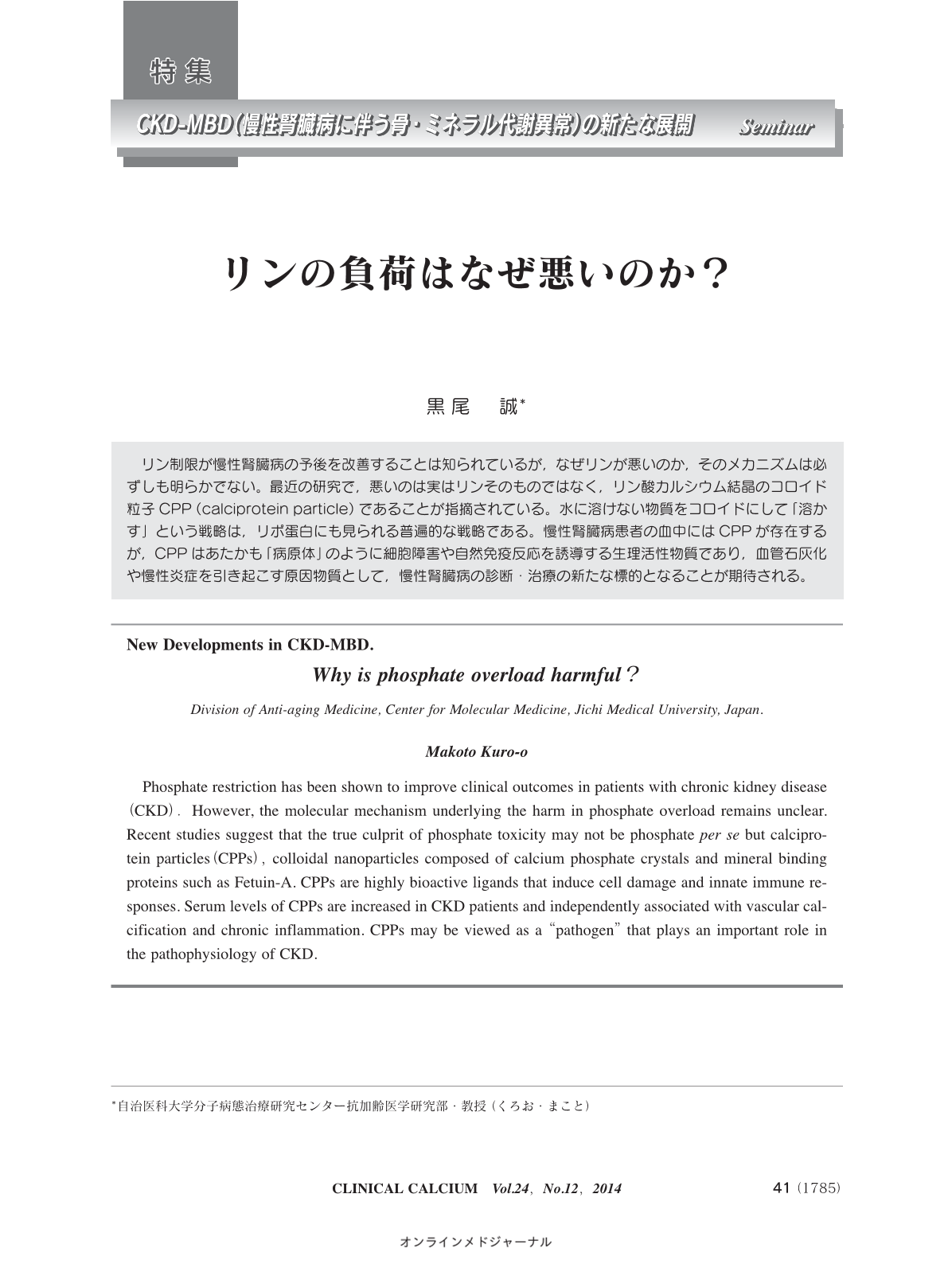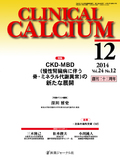Japanese
English
- 有料閲覧
- Abstract 文献概要
- 1ページ目 Look Inside
- 参考文献 Reference
リン制限が慢性腎臓病の予後を改善することは知られているが,なぜリンが悪いのか,そのメカニズムは必ずしも明らかでない。最近の研究で,悪いのは実はリンそのものではなく,リン酸カルシウム結晶のコロイド粒子CPP(calciprotein particle)であることが指摘されている。水に溶けない物質をコロイドにして「溶かす」という戦略は,リポ蛋白にも見られる普遍的な戦略である。慢性腎臓病患者の血中にはCPPが存在するが,CPPはあたかも「病原体」のように細胞障害や自然免疫反応を誘導する生理活性物質であり,血管石灰化や慢性炎症を引き起こす原因物質として,慢性腎臓病の診断・治療の新たな標的となることが期待される。
Phosphate restriction has been shown to improve clinical outcomes in patients with chronic kidney disease(CKD).However, the molecular mechanism underlying the harm in phosphate overload remains unclear. Recent studies suggest that the true culprit of phosphate toxicity may not be phosphate per se but calciprotein particles(CPPs),colloidal nanoparticles composed of calcium phosphate crystals and mineral binding proteins such as Fetuin-A. CPPs are highly bioactive ligands that induce cell damage and innate immune responses. Serum levels of CPPs are increased in CKD patients and independently associated with vascular calcification and chronic inflammation. CPPs may be viewed as a “pathogen” that plays an important role in the pathophysiology of CKD.



